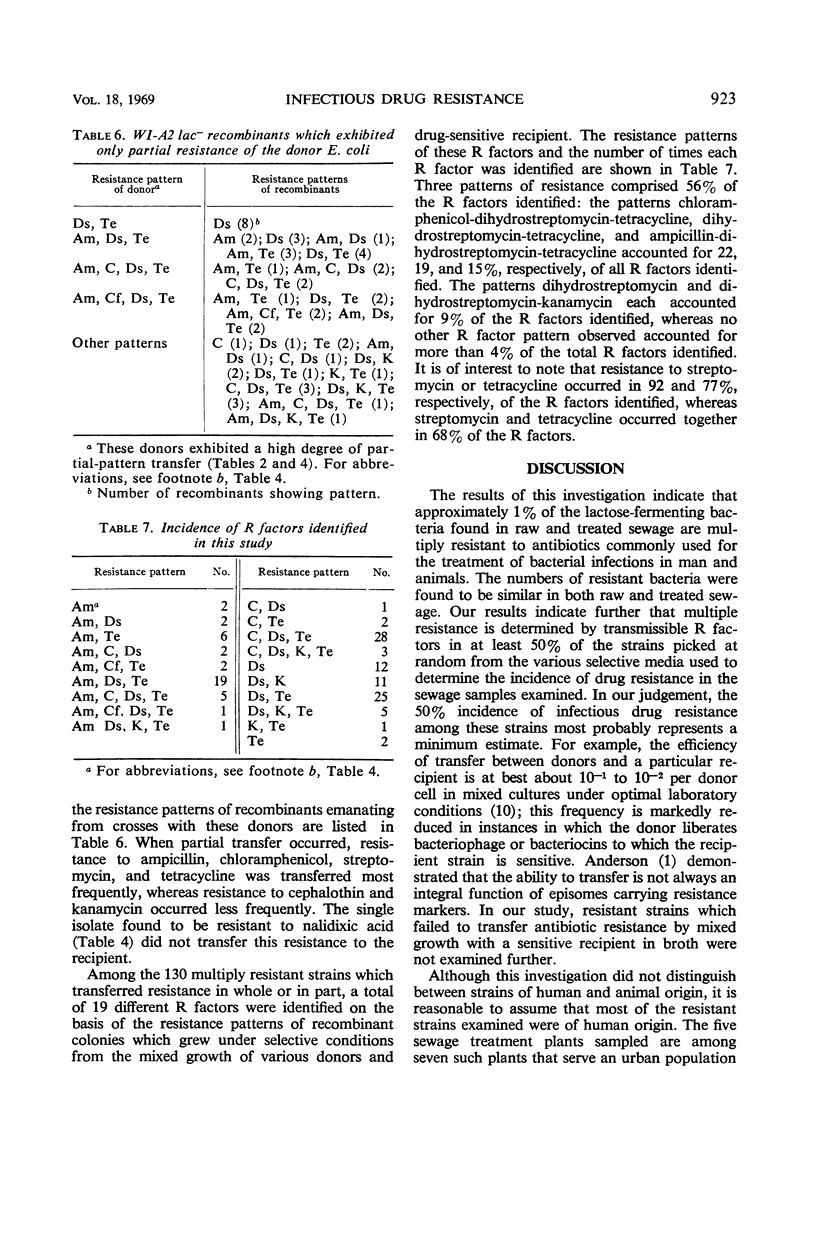Abstract
Raw and treated sewage samples were examined for antibiotic-resistant, lactose-fermenting bacteria. Approximately 1% of the total lactose-fermenting bacteria were multiply resistant. Of these organisms, 50% were capable of transferring all or part of their resistance to a drug-sensitive recipient. Only 43% of those isolated on media containing a single antibiotic were capable of resistance transfer, whereas 57% of those recovered on multiple antibiotic plates transferred resistance. R factors conferring resistance to chloramphenicol, streptomycin, and tetracycline; streptomycin and tetracycline; and ampicillin, streptomycin, and tetracycline accounted for 22, 19, and 15%, respectively, of those identified. The data indicate a significant level of infectious drug resistance among the intestinal bacteria of the urban population.
Full text
PDF






Selected References
These references are in PubMed. This may not be the complete list of references from this article.
- Anderson E. S. The ecology of transferable drug resistance in the enterobacteria. Annu Rev Microbiol. 1968;22:131–180. doi: 10.1146/annurev.mi.22.100168.001023. [DOI] [PubMed] [Google Scholar]
- Datta N. Drug resistance and R factors in the bowel bacteria of London patients before and after admission to hospital. Br Med J. 1969 May 17;2(5654):407–411. doi: 10.1136/bmj.2.5654.407. [DOI] [PMC free article] [PubMed] [Google Scholar]
- Gardner P., Smith D. H. Studies on the epidemiology of resistance (R) factors. I. Analysis of Klebsiella isolates in a general hospital. II. A prospective study of R factor transfer in the host. Ann Intern Med. 1969 Jul;71(1):1–9. doi: 10.7326/0003-4819-71-1-1. [DOI] [PubMed] [Google Scholar]
- Gill F. A., Hook E. W. Changing patterns of bacterial resistance to antimicrobial drugs. Am J Med. 1965 Nov;39(5):780–795. doi: 10.1016/0002-9343(65)90097-5. [DOI] [PubMed] [Google Scholar]
- Gunter A. C., Feary T. W. Infectious drug resistance among clinically isolated Escherichia coli. J Bacteriol. 1968 Nov;96(5):1556–1561. doi: 10.1128/jb.96.5.1556-1561.1968. [DOI] [PMC free article] [PubMed] [Google Scholar]
- Mitsuhashi S. The R factors. J Infect Dis. 1969 Jan;119(1):89–100. doi: 10.1093/infdis/119.1.89. [DOI] [PubMed] [Google Scholar]
- Moorhouse E. C. Transferable drug resistance in enterobacteria isolated from urban infants. Br Med J. 1969 May 17;2(5654):405–407. doi: 10.1136/bmj.2.5654.405. [DOI] [PMC free article] [PubMed] [Google Scholar]
- WATANABE T. Infective heredity of multiple drug resistance in bacteria. Bacteriol Rev. 1963 Mar;27:87–115. doi: 10.1128/br.27.1.87-115.1963. [DOI] [PMC free article] [PubMed] [Google Scholar]


